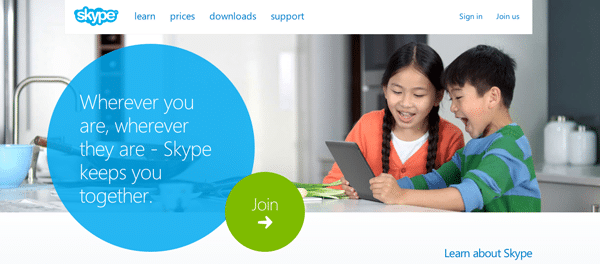This article is the first of a two-part series on how to improve your website conversion rates with a winning value proposition. You can find the link to the second part just below this post.
Got trouble converting website visitors into purchasing customers? Tried different tools but none is helpful enough? Conversion rate still below average just like last month’s?
Well, guess what?
You’re not alone.
Many businesses have trouble converting website visitors. In fact, most businesses are only able to convert about 4% of the total site visitors they receive. As for the other 96 percent … believe it or not, they go away unconverted.
Sad!
But hey, grin up like a Cheshire cat. . .

. . . because there’s a simple way you can turn ordinary website visitors into loyal buyers, a way you can boost your conversion rates without having to work your heart out.
“And what way could that be?” I hear you scream.
It’s through VALUE PROPOSITION!

Read that again: Value Proposition.
But:
It’s not just any value proposition.
If your value proposition must boost conversion, it has to be great. . . absolutely, unquestionably great.
And obviously, decisively effective, as well.
An effective value proposition can turn regular site visitors from web surfers into your loyal, purchasing customers.
In this article, I’ll be sharing with you on how to enhance your website conversion with value proposition.
Let’s start by looking at what value proposition truly is because more often than not, that’s the place where most businesses fluff up.
So:
Contents
What Exactly Is Value Proposition?
The common definition of value proposition is that it’s a promise of the value to be delivered.
While that definition holds some truths, value proposition is more than just a promise of value.
It’s a set of the most convincing benefits — that attract potential customers to you and make them want to buy from you — put together as a sum.
It’s a statement that draws special attention to those desirable values and advantages that your product, service, or brand can offer.
It’s about persuading people to buy from you (versus buying from your competitors) by establishing that you’ve got a better and more beneficial offer.
While it’s important to have a clear understanding of what value proposition is, it’s equally important to understand what it is NOT, and differentiate it from other marketing factors.
We’ve already looked at what value proposition is. . .
. . .now, what is it not?
What Value Proposition is NOT
Let’s jump right into this:
- Value proposition is not company slogan. A slogan can simply be described as a catch phrase. Short, striking, unique and distinctive phrase used in advertising, mostly. But value propositions? They’re more than just words.
A great example of a slogan:
- Value proposition is not an elevator pitch. An elevator pitch— or, elevator speech if you prefer— is a small group of words (usually brief and persuasive) which is used to spark up interest in what an organization does, in a project, idea, product/service, or in oneself.
A great example of an elevator pitch:

- Value proposition is not a positioning statement. Positioning statement gives details on where a given product, service or brand fits and sits in the market. Value proposition talks of the value of the product, service or brand.

And. . .
. . .value proposition is not unique selling proposition.
Difference Between Unique Selling Proposition (USP) and Value Proposition
I know there are couple of folks out there who get tuned down whenever the word “selling” is mentioned to them. So first, I’d like to clear the air on that front. . .
Despite the word “selling” in Unique Selling Proposition (USP), USP is not about selling. It’s simply about differentiation.

It’s what makes you different from the competition. It’s what makes your business stick out from the crowd. It’s what gets you a unique place in the minds of potential buyers.
Value proposition on the other hand takes your unique selling proposition and turns it into a valuable offer. It also goes further to show potential buyers the worth (not in terms of price) of your product/service and the unique value or exclusive benefit they stand to get if they buy from you. . .
. . .or, what they’ll lose if they decide not to buy from you.
Why Is Value Proposition Important?
Before a buyer makes a purchasing decision, they usually would check out about 4-5 different providers offering the same product or service.
This retail study found that approximately 81% of consumers extensively research and compare prices and financing offers before making purchases, especially major purchases.
An effective value proposition induces potential buyers. It convinces them that you can solve their problems better than anyone else.
So, to win the heart of potential buyers, not only do you need a great value proposition. . .
. . .you’d need to show it clearly; you’d have to make it the number one thing visitors see on your website.
A great value proposition sets you apart from the competition. It converts your visitors, making it one of the most important conversion factors.
Ideally, the ultimate importance of value proposition boils down to increasing your conversion rates.
But you know what?
If your competitor’s value proposition is better than yours. . .
. . .that means trouble.
But, no worries! You can optimize your value proposition to convert better.
As a matter of fact, one way to do that is to add boosters to your value proposition.
Value Proposition Boosters
You know, at times it’s the little things that make all the difference.
They may look little but can tilt the final purchasing decision for the good of your business.
Here’s how that works:
If everything (including your product/service, price, industry, target market, packaging etc.) is pretty much the same as your competitors’…
Or if it seems that your competitors have better offers than you do. . .
. . .you can still come out floating on top by adding some boosters to your value proposition.
Here are some booster examples:
- Risk-free starter package
- Free setup/installation
- Money back guarantee
- Cancel-any-time policy
- Free shipping
- No setup fee
- Quick delivery (examples: 24-hour delivery, 3-day delivery if it takes competitors a week to deliver etc.)
- Free bonuses/incentives for buying
- Free access to valuable resources
- A discounted price AKA % off (example: $899 now $599)
- Discount codes/coupon
- Free trial (especially with no commitments, no credit card)
For instance, 37signals saw a 30% increase in conversions of their Highrise product by including a “30-day Free Trial” text in the headline. The other headline that didn’t do well was “Start a HighRise Account”.
Believe it, boosters work like magic against competitors, especially those who do not offer them.
The ones listed above are just a few I can think of. Now, go ahead and pick one or more boosters from the list (or come up with yours). Creatively add the same to your value proposition for improved results.
Adding a booster to your value proposition sounds good, right?
But, wouldn’t it be great to know the core components of a value proposition that converts?
That way, you can easily come up with value propositions that knock off the competition, you know.
Well, I think that’ll be just awesome.
So, here are. . .
The Key Elements of an Effective Value Proposition
Truth is, when it comes to creating value proposition, there’s no one-strategy-fits-all formula to follow.
However, every top-performing value proposition has some key elements in common.
And if you want results with your value proposition, it’ll be a smart move to apply these elements.
Here they are:
- Primary headline: This is the main headline. It’s usually the first thing in value proposition visitors read and so should be short and sweet. Not more than a sentence, attention-gripping and should communicate the unique value and the exclusive benefit potential customers will get.
- Secondary headline: This element gives a brief, specific detail about what you’re offering. Usually, it takes after the primary headline and gives more details about the exclusive benefit. In place of a secondary-headline, you can make this a short paragraph of a sentence or two.
- Bullet points: Though not needed in every value proposition, listing the benefits of the product/service in bullet points can give your value proposition a lift. This is particularly useful if (1) the product/service has too many benefits that can’t all fit into the secondary headline, (2) there’s no secondary headline at all, or (3) the secondary headline focuses more on giving details about the primary headline.
Geekdom, got this right with their list of benefits…
- Image. Showing an image along with the text of your value proposition will help liven up your value proposition and as well drive home the message. It can be an image further showing the benefits of the product, or an image showing the product itself.
Here’s a pretty good example of value proposition with an image from Square:

Here’s another good example:

Whatever elements you choose to include in your value proposition, just make sure that every word (and every element) counts—if it shouldn’t be there, just don’t put it there.
Also, ensure that your value proposition is specific and that it contains unique benefits that are truly useful to your target users.
Now:
If you’d like to apply the elements outlined above but don’t know the specific steps to take, here are. . .
5 Quick Steps to Creating a Value Proposition for Your Business
- Identify your target customers. Make it clear who you want to sell to, what you want to sell to them and how your offer is different from the other ones out there. This will help differentiate and position you to create an effective value proposition.
- Find out what your competitors are missing. Something that customers are looking for. This will further differentiate you and help you write a value proposition that sells.
- Identify the benefits you’d be bringing to the table. What will customers get out of what you’re offering? How will the product/service solve their problems or make their lives better? Identify and list out these benefits and then shrewdly but creatively weave these benefits into your value proposition.
- Brainstorm and write down all the ideas that you can think of. Don’t play alone here, your team members may equally be handy.
- Pick one of those, or combine them. After everyone submits their ideas, you can decide to go with the most interesting one, or decide to combine two or more of the ideas to form one captivating value proposition.
Though the 5 steps listed above will work well for anyone who applies them effectively, just have in mind that these are not a must-follow process.
You may find that you do well with another approach.
This article is the first of a two-part series on how to improve your website conversion rates with a winning value proposition. You can read the second part here.





